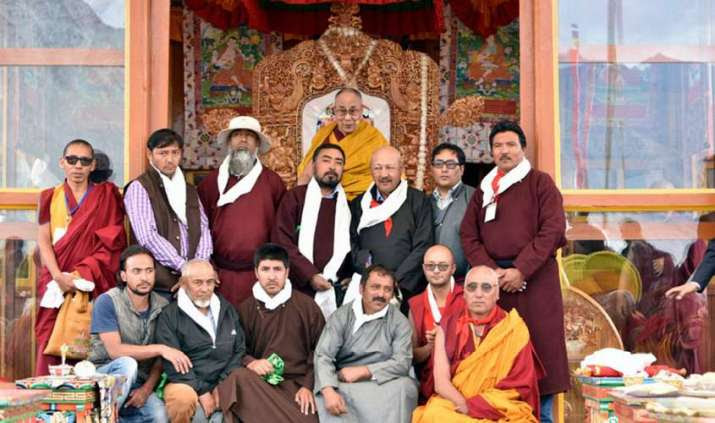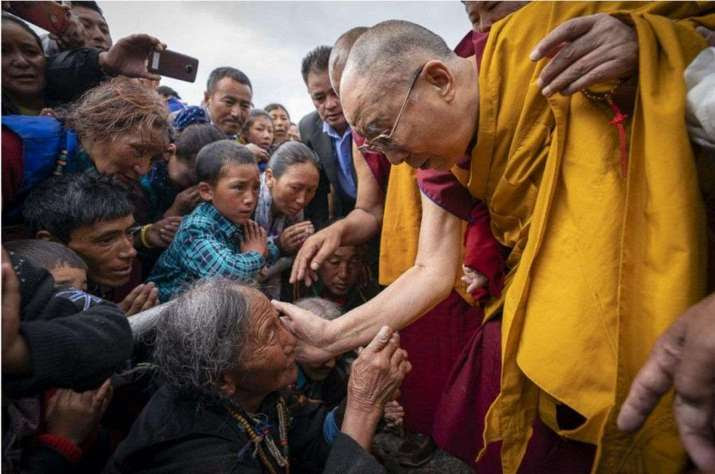
By Shyamal Sinha

Zanskar is (a subdistrict of the Kargil district) is situated in the eastern part of the state Jammu and Kashmir. The administrative centre is Padum. Together with the neighboring region of Ladakh, Zanskar was once briefly a part of Guge (Western Tibet).
Zanskar’s population is small, the April 2006 medical census records a population of 13,849 people. The medical census is the most accurate indicator of population as it collects birth, death, and census information from Zangskar’s 22 medical aid centers. Roughly 95% of the inhabitants practice Tibetan Buddhism, while the remainder are Sunni Muslims, whose ancestors settled in Padum and its environs in the 19th century.
Representatives of the Buddhist and Muslim communities in Zanskar in the far northern Indian state of Jammu and Kashmir recently signed a pledge of peace and religious harmony in the presence of His Holiness the Dalai Lama, vowing to bring an end to communal tensions that have plagued communities in the mountainous region for decades. His holiness described the landark step toward resolving the longstanding conflict during his visit to the Himalayan region as a major achievement.
“Friendship and harmony between different faiths are of fundamental importance,” the 83-year-old spiritual leader was quoted as saying. “The followers of different faiths must follow and practice the advice of their own teachers.” (Tibetan Review)
The community representatives presented their pledge to the Dalai Lama after he had concluded conferring the Avalokiteshvara empowerment during his visit to the Ladakh Division of Jammu and Kashmir late last month. His Holiness praised both communities for their efforts toward establishing interfaith harmony.
The head of the Muslim delegation, identified in media reports only as Gulam, lauded the Dalai Lama for his intervention, noting that a Peace Committee of six representatives from both religious communities had been established: “We owe it completely to His Holiness the Dalai Lama’s vision and compassion for enabling us to reach this milestone. We remain forever indebted.” (Phayul.com)
Tensions between Buddhist and Muslim communities in the region have resulted in social boycotts that have negatively impacted both communities as well as the local economy, coupled with intermittent eruptions of deadly violence.
“We wanted an audience with the Dalai Lama to talk about our continuous social boycott. Ending of the boycott has not yet trickled down to the ground,” Gulam observed. “The sentiment has definitely diluted. The two communities are openly interacting again, but it will take some more time for the communal vibes to die down.” (Sunday Guardian Live)
According to national census data for 2011, of the two districts that make up Ladakh Division, Kargil is a Muslim-majority district with Buddhists accounting for less than 15 per cent of the local population, while Muslims represent more than 76 per cent. In neighboring Leh District, Buddhist are a majority of 66.4 per cent, followed by Hindus at 17.1 per cent, and Muslims at 14.3 per cent.
His Holiness also urged an end to discrimination against peoples and communities based perceptions of caste, reminding the audience of an occasion when he had deliberately requested to be given tea offered by members of an “outcast” community in India. “The Buddha taught us that caste and clan are not important, what is important is your practice, your action, your deeds,” he emphasized. (Republic)

The Nobel Peace Prize laureate has repeatedly spoken out against India’s pervasive caste system. Earlier this year, at a special meeting for 500 international guests at his official residence in Dharamsala, he criticized the practice as a source of societal division that emphasizes inequality.*
Last year, His Holiness condemned the caste system as “feudal” and “outdated,” stating: “This so-called caste system was not created by God, not by any preacher, but by feudal systems. The landlords, including rajas and ranis, created an upper class and lower class in order to exploit other people. Eventually the lower class, psychologically [undermined], followed what the upper class said. But this is undemocratic . . . and is outdated.” (The Economic Times)
During his month-long visit to the remote Himalayan region, His Holiness also conferred several teachings and empowerments, and visited local educational and health facilities, including laying the foundation stone for a new learning center and library at Thiksay Sherab Skitsal-Ling. Skyabje Thiksay Khanpo Rinpoche, the monastery’s head lama, noted that the new center would also serve as a venue where people of different spiritual traditions could gather to study, debate, and discuss various issues.











